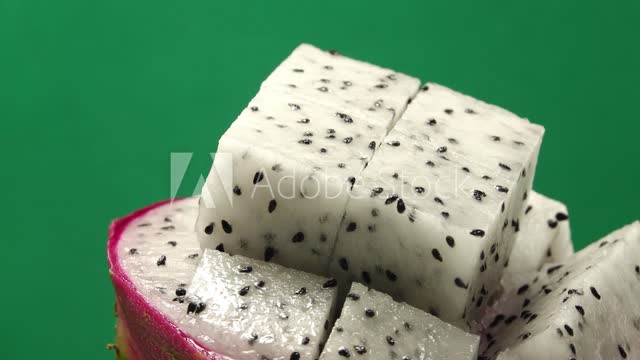Premium Only Content

Women farmers of Bengal’s Jhargram reap fortunes with organic rice http://gestyy.com/edPuRK
http://gestyy.com/edPuRK
Turnover of the company, formed by 2,677 women, from the cultivation of indigenous varieties pegged at ₹3 crores for the year
Shiv Sahay Singh KOLKATA AUGUST 21, 2022 09:05 IST
Women farmers growing indigenous varieties of rice in Jhargram district of West Bengal. Photo: Aamon women
Panchabati Baske of Damodarpur village and Nirmala Mahato of Murakhati village are trendsetters in their respective villages in West Bengal’s Jhargram district. Though not highly educated, Ms. Baske and Ms. Mahato have started a revolution by cultivating indigenous varieties of rice organically, without using any chemical fertilisers. There are 55 women farmers in Damodarpur village and 21 women farmers in Murakathi village following in their footsteps by growing indigenous varieties of rice.
Hundreds of women farmers have taken up the cultivation of indigenous rice varieties like Kalabhat (Black rice), Mallifullo (brown rice) and Kerala Sundari (raw aromatic full bran folk rice) and Red Rice, locally called as Sathia, in the remote villages of Jhargram.
What started in 2017 with a dozen women has taken the form of a company with 2,677 women farmers as shareholders to Aamon Mahila Chasi Producer Company Limited. The number of women cultivators, across the five-gram panchayats of Nayagram block in Jhargram, participating in this initiative now stands at over 4,500. The area of land cultivated this year is more than 1,100 hectares.
Ms. Baske started by cultivating the indigenous rice varieties in two to three cottages of land in 2016-17. This year, she has cultivated black rice in 1.5 bighas (1 bigha = 20 cottages) of land and Sathia rice in one bigha land. “We are saving ₹4,000 to ₹5,000 per bigha on fertilisers and there is not much difference in the yield,” she said. Both Ms. Baske and Ms Mahato told The Hindu that they have made profits by cultivating organic indigenous rice varieties. They also said that as stakeholders to Aamon, they have a greater say in decision-making when it comes to farming
RADAN, a non-government organisation, have hand-held the women by providing training in the cultivation process. Photo: Aamon women
PRADAN, a non-government organisation, has hand-held the women by providing training in the cultivation process. The body has also set up a rice processing mill and has started marketing the indigenous produce to different parts of the country. A bio- fertiliser unit has also come up in the region replacing the chemical-based fertilisers used in high-yielding varieties by farmyard manure and other natural inputs.
Madhura Kanjilal, an executive with PRADAN, said that the turnover for Aamon this year is pegged at ₹3 crores. “The women who are part of Aamon have a voice now. Though agriculture is considered a male domain, most of the labour is provided by women. Women farmers at Aamon have the final say as to what to do when it comes to agriculture,” she said.
According to the women farmers, the yield varies with the varieties. While it is about five to six quintals per bigha for indigenous varieties, for the high-yielding paddy cultivated with chemical fertilisers, this can be about nine to ten quintals. With the price of the indigenous varieties being three times, the women farmers are making a profit.
About us https://bit.ly/3GUPFOa
Contact us +919942258153 kvk.subadhra@gmail.com
https://3b15861cv7v7e46ftcmdzm4l6g.hop.clickbank.net
-
 11:32
11:32
ariellescarcella
16 hours ago"Being A Lady Boy Is Exciting!" (This Dude Has A Kid)
11.1K5 -
 1:03:33
1:03:33
The Dan Bongino Show
1 day agoSunday Special with Mike Benz, Michael Knowles, Rep. Tim Burchett and Rep. Andy Harris - 02/23/25
355K1.13K -
 1:36:21
1:36:21
Sarah Westall
12 hours agoViolence Erupting in the Panama Canal, Identifying Enemy Infiltration, Psyops Ongoing w/ Michael Yon
95K50 -
 1:56:25
1:56:25
Nerdrotic
15 hours ago $19.43 earnedThe Red Pyramid's Hidden Secrets | Forbidden Frontier #091
75.1K15 -
 2:08:53
2:08:53
vivafrei
23 hours agoEp. 252: Liberals DISQUALIFY Candidate from Race! DOGE Wins & Loses; Rumble Sues BRAZIL! & MORE!
180K270 -
 1:15:12
1:15:12
Josh Pate's College Football Show
14 hours ago $24.73 earnedCFB’s Top 12 Programs | TV Executives & Our Sport | USC Changes Coming | Early Championship Picks
120K3 -

Vigilant News Network
18 hours agoUK Government BUSTED in Secret Plot to Extract Your Data | Media Blackout
122K28 -
 1:03:32
1:03:32
Winston Marshall
3 days ago"War On Children!" The DEMISE Of The West Starts With Schools - Katharine Birbalsingh
137K68 -
 48:02
48:02
Survive History
21 hours ago $9.75 earnedCould You Survive as a Sharpshooter in the Napoleonic Wars?
86.5K3 -
 12:03
12:03
Space Ice
21 hours agoSteven Seagal's China Salesman - Mike Tyson Knocks Him Out - Worst Movie Ever
64.7K21